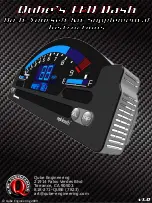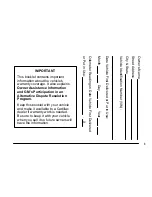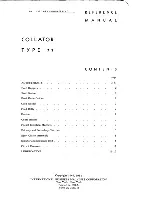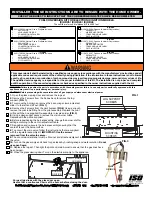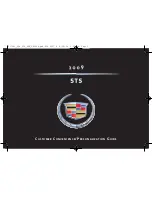
TEBS E
5
braking system
35
5.8 System
monitoring
5.8.1 Warnings and system messages
Lamp signal indications after turning on the ignition
Based on ECE R 13, two reactions are permitted when switching on the ignition
and can be defined with the TEBS E Diagnostic Software.
Variant 1
The fault indicator / warning lamp in the towing vehicle illuminates after switching
the ignition on.
If no current fault is detected, the fault indicator / warning lamp goes out after
approx. 2 seconds. Trailer EBS E is operational.
If a current fault was detected, such as a sensor error, the fault indicator / warning
lamp remains on.
If a sensor fault was detected during the last drive, the warning lamp / fault indica-
tor goes out at speeds v > 7 km/h.
If the warning lamp / fault indicator does not go out even after starting to drive, the
driver must have the fault rectified at a workshop.
Variant 2
The fault indicator / warning lamp in the towing vehicle illuminates after switching
the ignition on.
The warning lamp / fault indicator goes out at v
≥
7km/h.
If the warning lamp / fault indicator does not go out even after starting to drive, the
driver must have the fault rectified at a workshop.
Warnings and system messages
If the amber or red fault indicator / warning lamp on the instrument panel lights up
or flashes while driving, a warning or system message is indicated.
Amber fault indicator / warning lamp:
Controlled by pin 5 of the ISO 7638 plug
connection and via CAN bus
Red fault indicator / warning lamp:
Controlled via the CAN bus of the ISO 7638
plug connection
Any events that occur during operation are stored in the Trailer EBS E and can be
read out in the workshop using the TEBS E Diagnostic Software.
The fault indicator / warning lamp must be monitored by the driver.
If the fault indicator / warning lamps are illuminated, a visit to the workshop is nec-
essary. The instructions on the display must be observed if applicable.
The faults are displayed according to the fault's priority level. The priority level of
the faults is grouped into five classes:
Class 0:
Minor, temporary faults are indicated by an amber fault indicator / warning
lamp.
Class 1:
Medium severity, which cause partial functions (e.g. ABS) to be deacti-
vated, are indicated by an amber fault indicator / warning lamp.
Class 2:
Severe faults in the braking system are indicated by a red fault indicator /
warning lamp.
Class 3:
Minor faults that can cause deactivation of GIO functions (such as speed
signal) are indicated by the amber fault indicator / warning lamp flashing after the
respective function is engaged.
Class 4:
Minor faults that can cause deactivation of GIO functions (such as the
remote control unit). There is no indication through the fault indicator / warning
lamp.
































